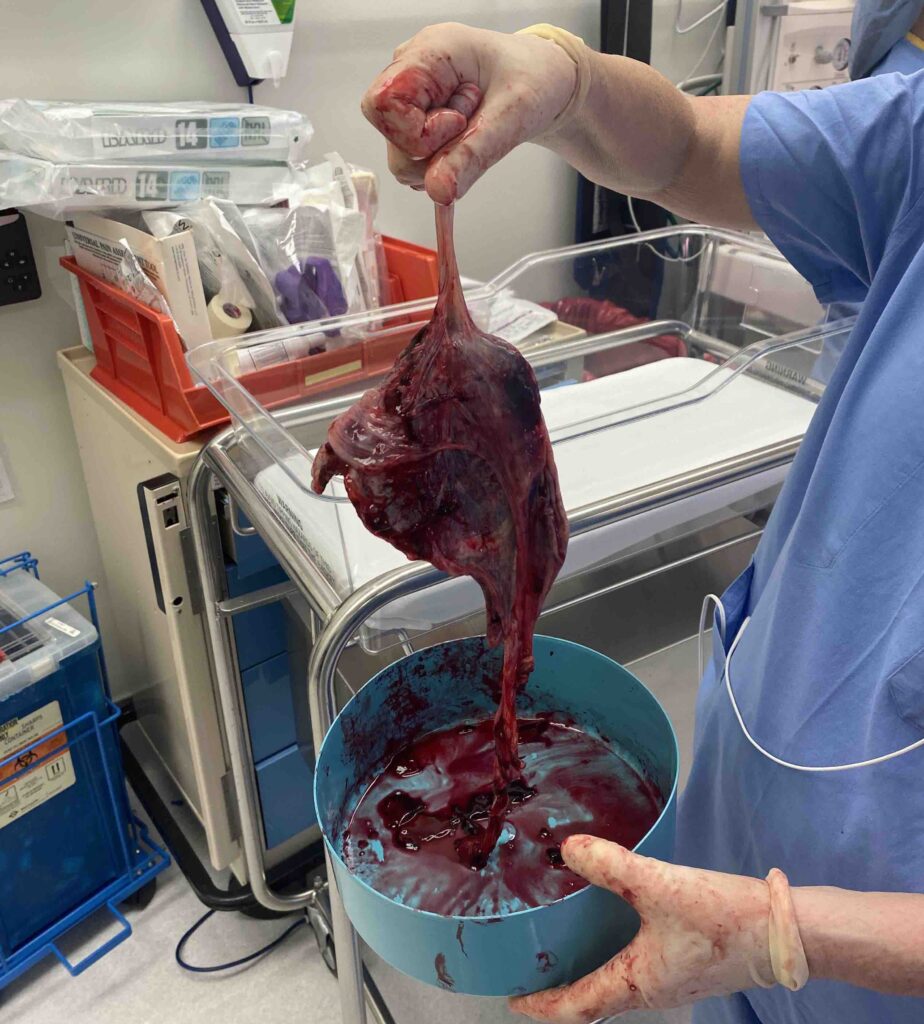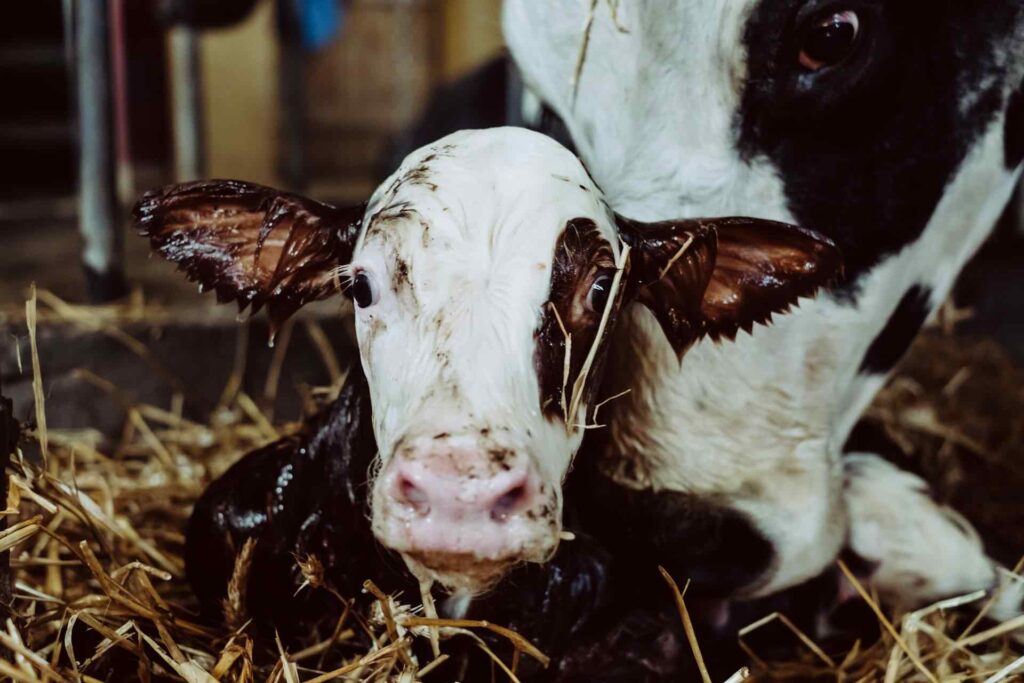By Ashley Reaver, MS, Registered Dietitian
If you are researching nutrition while postpartum, you’ve undoubtedly come across information on eating your placenta after delivery. We hope this blog post breaks down the why and the why would you behind placentophagia.
Placentophagia is the practice of eating the placenta that is delivered after birthing a baby. This has been observed in the animal world for a long time but its popularity among humans has increased in recent years. Many companies are popping up that offer a variety of preparations for preserving your placenta and preparing it for consumption.
Let’s start with the role of the placenta during pregnancy
If you needed more proof that mothers are incredible, we literally grow an organ during pregnancy. This does not happen at any other time in life, but women do it without giving themselves enough credit for each pregnancy! The placenta serves a vital role during pregnancy, delivering essential nutrients from the mother to the growing fetus and removing waste products for excretion. It also houses hormones like progesterone, estrogen, and hCG, human chorionic gonadotropin – the same hormone your pregnancy test picks up as early as 10 days after conception. It also plays a significant metabolic role during pregnancy, influencing glucose metabolism and helping to orchestrate it’s changes throughout pregnancy.
After birthing the baby, the 3rd phase of delivery is expelling the placenta. This final phase of delivery is often completely forgotten while soaking up baby snuggles or recovering from a C-section. It’s unceremonious end does not fit the amazing feat it accomplished in being the go-between for mother and baby for 9.5 months. Typically, the placenta is discarded as hazardous waste. Before being trashed, some moms are lucky enough to snap a picture or choose to make some artwork out of the organ that gave their baby so much. Others chose to eat it.
Why would you eat your placenta?
It’s important to start by saying that there is no research that supports consumption of the placenta for improved maternal health across a number of outcomes. Importantly, no woman and no pregnancy are the same so it is difficult to equitably compare the experience of one mother to another or even one pregnancy to another for the same woman. Despite the lack of evidence, proponents of consuming the placenta claim increased milk production, higher energy levels, enhanced mood, improved newborn weight gain, and reduced incidence of postpartum depression.
The placenta can be consumed raw, cooked, dehydrated, or encapsulated, which is the most common way it is consumed in the US. Unfortunately, there is no supporting research for any of these consumption methods, even encapsulation, which would in theory be the most “controlled” method.

Ashley’s placenta
Is the placenta nutritious?
The placenta, like other animal organs, provides nutrients such as B vitamins, iron, and protein. Yet, these nutrients are readily obtainable from common foods.
B vitamins are essential for normal metabolic functions that extract energy from the food we eat, in addition to other functions like red blood cell production, maintenance of healthy tissues, and transmission of nerve impulses and muscle contractions. Per ounce, the placenta is similar to other animal proteins. Interestingly, the placenta is a good source of vitamin B12, like other animal products. Vitamin B12 is only found in animal products. Although it is found in some mushrooms, nutritional yeast, and fortified cereals and non-dairy milks.
Iron, a nutrient that is needed after delivery in order to help with blood replenishment following delivery, is also present. Did you know that women usually lose about two cups of blood during vaginal birth and about four cups of blood following a C-section? The placenta has roughly 45 mg of iron, about the standard dose you would find in a single dose of a prenatal supplement.
While protein is an incredibly important nutrient to focus on during the postpartum period, that is not enough of a reason to consume the placenta. The amount of protein in the placenta will vary based on the size of the placenta, which is different for each pregnancy. On average, the placenta contains approximately 50g of protein. This is equivalent to about 7 ounces of animal protein or the average size of a chicken breast.
Can you consume the hormones in the placenta?
The placenta does produce a lot of hormones and contractions are stimulated by hormones in the placenta. Another theory in support of placenta consumption is that the hormones, especially oxytocin or the “happy hormone”, can be beneficial during the postpartum period. These hormones are likely destroyed in the processing of cooked, dehydrated, or encapsulated proteins.
Hormones are protein and, like any other protein, exposure to heat can denature proteins, which leaves them non-functional. In order for proteins to work, they must have a specific sequence of amino acids and be in a specific 3D configuration. Heat removes proteins from their 3D configuration.
This 3D cannot be re-achieved without completely breaking down the protein to individual amino acids, which happens during digestion, and then reconfiguration in the body based on the body’s needs. For example, the amino acids that make up a hormone may be repurposed into a protein that supports the muscle.
But what about raw placenta that hasn’t been processed or exposed to heat? The digestive tract has a process to denature proteins, including hormones, so they cannot have a biological function in our bodies. Protein digestion begins in the mouth but it is largely accomplished in the stomach. During digestion, enzymes and acids are released to make an incredibly acidic environment that denatures proteins just like heat, removing it from its 3D configuration and, therefore, also removing it’s biological function.
Why do animals eat their placenta?
Some animals consume their placenta shortly after birthing. It is often mentioned that animals instinctively consume their placenta, suggesting a natural inclination that humans may have lost due to modern birthing practices.
However, veterinarians propose that some animals may ingest placenta simply because they find it palatable since it may taste salty and savory. It likely also deters predators attracted by the scent of blood and thereby protects their offspring.

Adverse effects of consuming placenta
Adverse effects of consuming placenta are likely minimal, but it is noteworthy that many researchers and physicians caution against consumption due to potential health risks associated with bacterial or viral infections.
Why shouldn’t you eat placenta?
It isn’t nutritionally superior to other foods, the hormones found in the placenta are likely destroyed in the processing, and there is the potential for bacterial and viral infection from consumption, although rare. Not to mention it is expensive and not regulated.
In conclusion, while tangible benefits are unlikely, individuals who choose to consume placenta should prioritize proper preparation to mitigate any potential health risks.
To learn more about all of the nutrients that impact your recovery and are essential for breastfeeding, explore our page, learn more about our course, or purchase or cookbook to easily achieve your nutrient needs while your focus is on your little one!
References
Alex Farr et al., “Human Placentophagy: A Review,” American Journal of Obstetrics and Gynecology 218, no. 4 (2018): 401–e1.
Alexa Barad et al., “Placental Iron Content is Lower than Previously Estimated and is Associated with Maternal Iron Status in Women at Greater Risk of Gestational Iron Deficiency and Anemia,” The Journal of Nutrition 152, no. 3 (2022): 737–746.
Daniel Mota-Rojas et al., “Consumption of Maternal Placenta in Humans and Nonhuman Mammals: Beneficial and Adverse Effects,” Animals 10, no. 12 (2020): 2398.

Be the first to comment